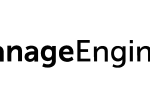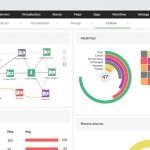By. Carey Anderson (Founder & CEO, 1datapipe)
In an age defined by widespread digital interconnectivity, increasingly intricate fraudulent tactics can feel like an incessant risk to the financial system. For example, the Financial Services Authority (OJK) previously said that Rp139 trillion was lost to fraud between 2017 and 2023.
Not that they are any more than coincidental, but this is happening while artificial intelligence (AI) grows in prominence. It might seem like hype, but AI’s adaptability, as well as its ability to identify complex patterns, and swiftly analyse vast amounts of data hold immense potential.
With its capacity for continuous learning and improvement, AI-powered systems can provide real-time detection and prevention of fraudulent transactions, significantly reducing the window of vulnerability for businesses and financial institutions. Additionally, AI can augment human expertise by automating repetitive tasks, enabling fraud analysts to focus on high-risk cases and strategic decision-making.
The possibilities from these capabilities are certainly noteworthy. Just think about how creditors can expand their metrics for assessing an individual’s ability to make payments. This could add to traditional credit metrics such as individual’s credit history, including their payment history, outstanding debts, and credit utilisation to paint a fuller, richer picture of a person’s financial health.
This is especially pertinent in the Indonesian context, where the financial ecosystem is juggling more financial inclusion without compromising on risk. Ultimately, AI’s agility and efficiency offer a formidable defence against the ever-evolving landscape of financial fraud. However, AI is no silver bullet, and significant challenges remain in the way.
Fostering AI Adoption
At the end of August last year, the Coordinating Ministry for Economic Affairs revealed that the digital economy will need nine million talents in the next decade or so. Its deputy minister, Rudy Salahuddin, even fingered AI as a major driver for this demand. But acquiring the talent to drive this AI development is not going to be easy. Firstly, competition for skilled individuals is fierce.
Meanwhile, although AI can minimise the skills gap, financial services providers will still have to do the work of building an AI-focused organisation. That rests on developing the right process and deploying the right tools.
The litmus test will arrive in the form of how prepared organisations are to apply AI to enhance fraud prevention and credit risk models. The sizable unbanked and underbanked population across the nation underscores the importance of this, highlighting the need for practical application to maximise positive outcomes.
Driving the Future of Risk Assessment
As with any new, groundbreaking technology it is easy to get swept up in the hype and opt for the most impressive sounding solution. Unfortunately, many projects still falter, causing confusion among decision-makers. Sometimes this is because tools aren’t actually as good as they seem. Other times because organisations lack implementation skills.
Constructing an infrastructure robust enough to handle the influx of data, while maintaining agility and security, hinges on integration solutions that offer both scalability and reliability. Here’s where a streamlined, single API endpoint comes in. By unifying alternative data attributes with traditional credit data, financial services companies are empowered to detect and prevent fraud, accurately assess credit risk, and promote financial inclusion.
As financial services stand on the cusp of the coming AI-centric era, it is essential to be prepared for full utilisation. A steadfast emphasis on effective processes and tool deployment holds the key to unlocking effective and inclusive credit risk assessments. It is through these robust tools and keenly studied processes that lenders can ensure AI systems seamlessly mesh with existing workflows. Ultimately, this is what will take decision-making and processes to new heights, while minimising errors and therefore risks.




















